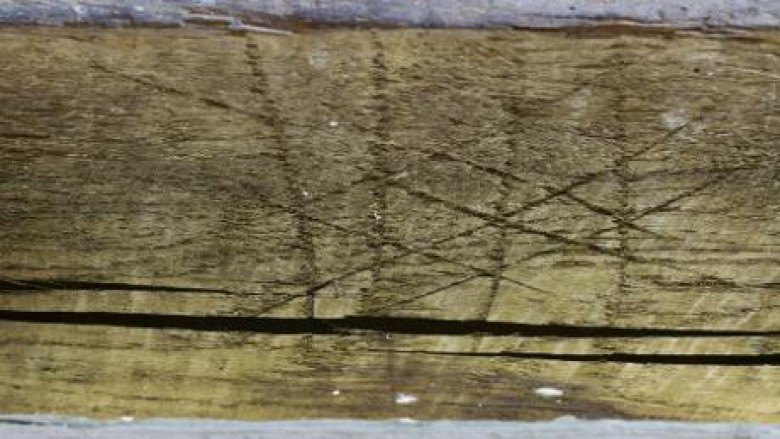2nd April 2015
Marks for protection against witchcraft have been found under the floorboards and around the fireplace in the Upper King's Room at Knole House, in Kent, during conservation work. They were carved within months of the 1605 Gunpowder Plot during the refitting of the room – intended for James I of England. Since he never visited, their ability to protect him was not put to the test – Knole's owner Thomas Sackville died in 1608 and his son was less important at court.
The marks include maze-like patterns to trap demons, who were supposed to follow the lines and be unable to escape. Vs and Ws are thought to call on the protection of the Virgin Mary – the W, called the Marion Mark, stands for 'Virgin of Virgins'. There are also scorch marks, which may have been thought to protect the wood from burning.
Knole is an exceptionally beautiful historic house near Sevenoaks in Kent, open to the public and run by the National Trust. We filmed some scenes there for The Other Boleyn Girl.
So-called 'witch' marks, can be found in English houses from medieval times onwards, and mostly between the 15th and early 18th centuries. The opening of the fireplace and the space under the floorboards were thought to be weak spots needing particular defence. These ones at Knole may have been part of the panic after the Gunpowder Plot narrowly failed to blow up King James I and the Protestant parliament.
James I was known to fear witchcraft – he wrote a book on the subject, Daemonologie, and seems to have believed that witches were specifically trying to kill him. Public announcements linked the Gunpowder Plot with witchcraft, and Knole House may have been doing their best for royal security.
Image ©National Trust/Martin Havens
